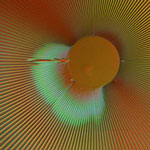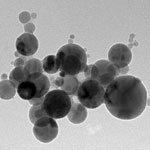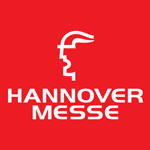Showing Spotlights 161 - 168 of 207 in category All (newest first):
 A European project has completed an extensive five-year study of the needs and opportunities for coordinating future research and development in nanomaterials science and nanotechnology for the advancement of technologies ranging from communication and information, health and medicine, future energy, environment and climate change to transport and cultural heritage. Based on the collaborative work of more than 600 experts from all over the world, the project has compiled an overall picture of the present and future developments in the large spectrum of nanomaterials. Although one of the foci was to highlight the important roles of advanced analytical equipment at European research infrastructures, especially at synchrotron radiation, laser and neutron facilities, the 500-page project report provides an excellent overview of the nanomaterials revolution that is upon us. This is one of the best, up-to-date primers on nanotechnologies!
A European project has completed an extensive five-year study of the needs and opportunities for coordinating future research and development in nanomaterials science and nanotechnology for the advancement of technologies ranging from communication and information, health and medicine, future energy, environment and climate change to transport and cultural heritage. Based on the collaborative work of more than 600 experts from all over the world, the project has compiled an overall picture of the present and future developments in the large spectrum of nanomaterials. Although one of the foci was to highlight the important roles of advanced analytical equipment at European research infrastructures, especially at synchrotron radiation, laser and neutron facilities, the 500-page project report provides an excellent overview of the nanomaterials revolution that is upon us. This is one of the best, up-to-date primers on nanotechnologies!
Apr 29th, 2010
 One of the key issues in the young field of nanotoxicology is the lack of standards and definitions. Although there have been some efforts, there still is no coherent international approach to determining if and what risks are posed by what kind of nanotechnology materials. At the core of the problem are the serious challenges that are created when comparing test results and drawing conclusions without adequate standardization and nanomaterial characterization. Exemplifying this set of problems further, a new study shows that even the most basic set of data, the nanomaterial characterization information provided by the manufacturer, can't be relied on - something which shouldn't come as a complete surprise given the existing problems with characterization data.
One of the key issues in the young field of nanotoxicology is the lack of standards and definitions. Although there have been some efforts, there still is no coherent international approach to determining if and what risks are posed by what kind of nanotechnology materials. At the core of the problem are the serious challenges that are created when comparing test results and drawing conclusions without adequate standardization and nanomaterial characterization. Exemplifying this set of problems further, a new study shows that even the most basic set of data, the nanomaterial characterization information provided by the manufacturer, can't be relied on - something which shouldn't come as a complete surprise given the existing problems with characterization data.
Apr 27th, 2010
 Taking the patent land grab to a new level, the government of Greece today, April 1, filed a patent and trademark application for the term nanotechnology with the European Patent Office. The country is thereby seeking the right to prevent third parties from commercially exploiting these and related terms without paying royalties. Notwithstanding the moral high ground the Greek government is trying to occupy, observers note that the real reason for this surprising move is very simple and very down-to-earth: money. Cash-strapped Greece, on the brink of bankruptcy, is desperate for revenues. Greece's massive debt problem has shaken the entire euro zone and undermined the shared currency. Greece's public debt is so high that the country could default - with potentially dire results for the Euro.
Taking the patent land grab to a new level, the government of Greece today, April 1, filed a patent and trademark application for the term nanotechnology with the European Patent Office. The country is thereby seeking the right to prevent third parties from commercially exploiting these and related terms without paying royalties. Notwithstanding the moral high ground the Greek government is trying to occupy, observers note that the real reason for this surprising move is very simple and very down-to-earth: money. Cash-strapped Greece, on the brink of bankruptcy, is desperate for revenues. Greece's massive debt problem has shaken the entire euro zone and undermined the shared currency. Greece's public debt is so high that the country could default - with potentially dire results for the Euro.
Apr 1st, 2010
 A scarcity of empirical data - especially regarding losses - hampers nanotechnology-related risk dialogue. Nanotechnology is a growing niche, so there is little litigation or loss history to analyze. Thus, much of the discussion of nanotechnology and its management flows from hypothetical examples. Less murky is the fact that nanotechnology is not a passing fad. It has innovative applications for a range of technologies and sectors, including drug delivery, medical imaging, integrated sensors, and semiconductors. The biggest areas of nanotechnology risk management concerns lies in workers' compensation and product liability. This article looks at industry responses and risk management strategies.
A scarcity of empirical data - especially regarding losses - hampers nanotechnology-related risk dialogue. Nanotechnology is a growing niche, so there is little litigation or loss history to analyze. Thus, much of the discussion of nanotechnology and its management flows from hypothetical examples. Less murky is the fact that nanotechnology is not a passing fad. It has innovative applications for a range of technologies and sectors, including drug delivery, medical imaging, integrated sensors, and semiconductors. The biggest areas of nanotechnology risk management concerns lies in workers' compensation and product liability. This article looks at industry responses and risk management strategies.
Dec 15th, 2009
 As a reader of Nanowerk we would like to invite you to joins us at the MicroNanoTec trade show at HANNOVER MESSE 2010 completely free of charge. HANNOVER MESSE will embrace microsystems technology and nanotechnology in a single trade fair under the new name MicroNanoTec. Microsystems technology and nanotechnologies have formed an important part of HANNOVER MESSE for many years. In the past they have mainly been presented at the leading trade fair MicroTechnology. The change of name signals a further expansion of microtechnology and nanotechnology at HANNOVER MESSE. The world's leading showcase for industrial technology is staged annually in Hannover, Germany. The next HANNOVER MESSE will be held from 19 to 23 April 2010.
As a reader of Nanowerk we would like to invite you to joins us at the MicroNanoTec trade show at HANNOVER MESSE 2010 completely free of charge. HANNOVER MESSE will embrace microsystems technology and nanotechnology in a single trade fair under the new name MicroNanoTec. Microsystems technology and nanotechnologies have formed an important part of HANNOVER MESSE for many years. In the past they have mainly been presented at the leading trade fair MicroTechnology. The change of name signals a further expansion of microtechnology and nanotechnology at HANNOVER MESSE. The world's leading showcase for industrial technology is staged annually in Hannover, Germany. The next HANNOVER MESSE will be held from 19 to 23 April 2010.
Dec 3rd, 2009
 The physical properties of nanostructures have been investigated extensively both theoretically and experimentally. Among these properties, melting temperature, superconductive temperature, Curie temperature and Debye temperature are key physical quantities since they are the characteristic temperatures of melting, superconduction, ferromagnetism and vibration. When the size of materials approaches the nanoscale, the surface-to-volume ratio increases and matter begins to behave exotically. Considering this, scientists can predict size effects on material properties from macroscopic laws, the so-called top-down approach. They present a general equation that is based only on the surface area to volume ratio of nanostructures and statistics (Fermi-Dirac or Bose-Einstein) followed by the particles involved in the considered phenomena (melting, ferromagnetism, vibration and superconduction).
The physical properties of nanostructures have been investigated extensively both theoretically and experimentally. Among these properties, melting temperature, superconductive temperature, Curie temperature and Debye temperature are key physical quantities since they are the characteristic temperatures of melting, superconduction, ferromagnetism and vibration. When the size of materials approaches the nanoscale, the surface-to-volume ratio increases and matter begins to behave exotically. Considering this, scientists can predict size effects on material properties from macroscopic laws, the so-called top-down approach. They present a general equation that is based only on the surface area to volume ratio of nanostructures and statistics (Fermi-Dirac or Bose-Einstein) followed by the particles involved in the considered phenomena (melting, ferromagnetism, vibration and superconduction).
Nov 3rd, 2009
 From an energy savings point of view, the use of smart windows - electrically switchable glass which controls the amount of light passing through when voltage is applied - can save costs for heating, air-conditioning and lighting and avoid the cost of installing and maintaining motorized light screens or blinds or curtains. A disadvantage is of course the fact that the smart windows themselves need to draw energy in order to do their job. Now, researchers have developed a self-powered, fast-switching smart window that doubles as a solar cell, using sun light to power its chromic behavior and making the case for energy savings even more compelling. By employing a patterned tungsten oxide/platinum electrochromic electrode and a dye-sensitized titanium dioxide nanoparticle photoanode, the self-powered photovoltachromic cell (PVCC) which exhibits distinct electrochromic characteristics of a fast switching rate and tunable transmittance under illumination. The novel device has both photoelectrochromic and photovoltaic characteristics.
From an energy savings point of view, the use of smart windows - electrically switchable glass which controls the amount of light passing through when voltage is applied - can save costs for heating, air-conditioning and lighting and avoid the cost of installing and maintaining motorized light screens or blinds or curtains. A disadvantage is of course the fact that the smart windows themselves need to draw energy in order to do their job. Now, researchers have developed a self-powered, fast-switching smart window that doubles as a solar cell, using sun light to power its chromic behavior and making the case for energy savings even more compelling. By employing a patterned tungsten oxide/platinum electrochromic electrode and a dye-sensitized titanium dioxide nanoparticle photoanode, the self-powered photovoltachromic cell (PVCC) which exhibits distinct electrochromic characteristics of a fast switching rate and tunable transmittance under illumination. The novel device has both photoelectrochromic and photovoltaic characteristics.
Oct 27th, 2009
 A couple of years ago we reported on applications of nanotechnology-based processes to the restoration and preservation of priceless artwork. Researchers have shown that nanodispersions of solids, micelle solutions, gels and microemulsions offer new reliable ways to restore and preserve works of art by merging together the main features and properties of soft-matter and hard-matter systems, allowing the synthesis of systems specifically tailored for the works of art to fight the deterioration processes which threaten many priceless masterpieces. Researchers at the University of Florence, who have been leading efforts to apply nanoparticle-based cleaning agents for artwork, have now further developed their work by exploring the design of novel systems containing low amounts of volatile oils as low-impact cleaning tools for the removal of aged polymeric coatings from the surface of paintings.
A couple of years ago we reported on applications of nanotechnology-based processes to the restoration and preservation of priceless artwork. Researchers have shown that nanodispersions of solids, micelle solutions, gels and microemulsions offer new reliable ways to restore and preserve works of art by merging together the main features and properties of soft-matter and hard-matter systems, allowing the synthesis of systems specifically tailored for the works of art to fight the deterioration processes which threaten many priceless masterpieces. Researchers at the University of Florence, who have been leading efforts to apply nanoparticle-based cleaning agents for artwork, have now further developed their work by exploring the design of novel systems containing low amounts of volatile oils as low-impact cleaning tools for the removal of aged polymeric coatings from the surface of paintings.
Oct 26th, 2009
 A European project has completed an extensive five-year study of the needs and opportunities for coordinating future research and development in nanomaterials science and nanotechnology for the advancement of technologies ranging from communication and information, health and medicine, future energy, environment and climate change to transport and cultural heritage. Based on the collaborative work of more than 600 experts from all over the world, the project has compiled an overall picture of the present and future developments in the large spectrum of nanomaterials. Although one of the foci was to highlight the important roles of advanced analytical equipment at European research infrastructures, especially at synchrotron radiation, laser and neutron facilities, the 500-page project report provides an excellent overview of the nanomaterials revolution that is upon us. This is one of the best, up-to-date primers on nanotechnologies!
A European project has completed an extensive five-year study of the needs and opportunities for coordinating future research and development in nanomaterials science and nanotechnology for the advancement of technologies ranging from communication and information, health and medicine, future energy, environment and climate change to transport and cultural heritage. Based on the collaborative work of more than 600 experts from all over the world, the project has compiled an overall picture of the present and future developments in the large spectrum of nanomaterials. Although one of the foci was to highlight the important roles of advanced analytical equipment at European research infrastructures, especially at synchrotron radiation, laser and neutron facilities, the 500-page project report provides an excellent overview of the nanomaterials revolution that is upon us. This is one of the best, up-to-date primers on nanotechnologies! 
 Subscribe to our Nanotechnology Spotlight feed
Subscribe to our Nanotechnology Spotlight feed





